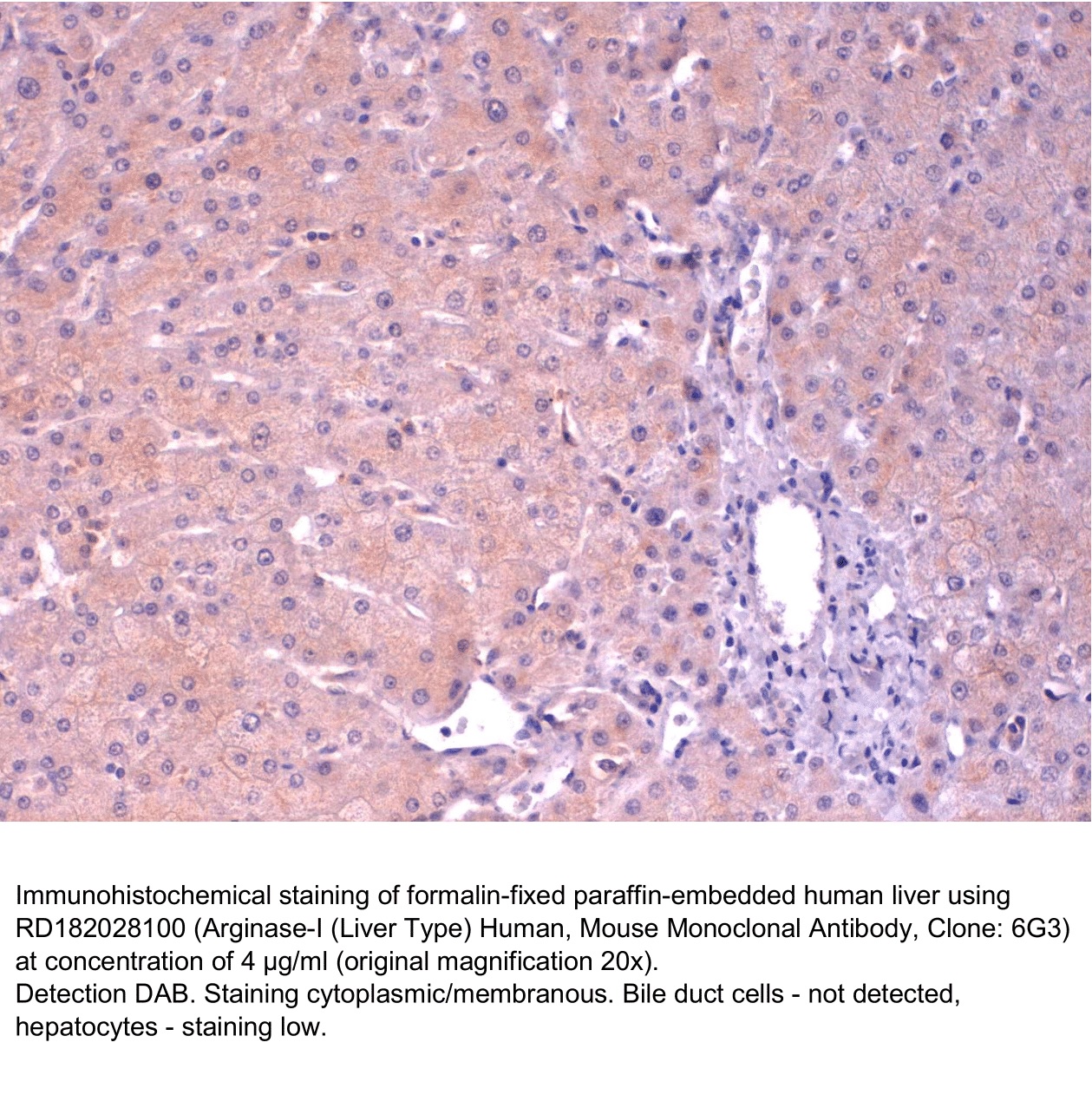Type
Monoclonal Antibody
Applications
Western blotting, ELISA, Immunohistochemistry
Antibodies Applications
Source of Antigen
E. coli
Hosts
Mouse
Isotype
IgG1
Clone
6G3
Preparation
The antibody is a mouse monoclonal antibody against recombinant Human Arginase – liver type arginase.
Species Reactivity
Human. Not yet tested in other species.
Purification Method
Affinity chromatography on a column with immobilized protein A.
Antibody Content
0.1 mg (determined by BCA method, BSA was used as a standard)
Formulation
The antibody is lyophilized in 0.05 M phosphate buffer, 0.1 M NaCl, pH 7.2.
Reconstitution
Add 0.2 ml of deionized water and let the lyophilized pellet dissolve completely. Slight turbidity may occur after reconstitution, which does not affect activity of the antibody. In this case clarify the solution by centrifugation.
Shipping
At ambient temperature. Upon receipt, store the product at the temperature recommended below.
Storage/Expiration
The lyophilized antibody remains stable and fully active until the expiry date when stored at -20°C. Aliquot the product after reconstitution to avoid repeated freezing/thawing cycles and store frozen at -80°C. Reconstituted antibody can be stored at 4°C for a limited period of time; it does not show decline in activity after one week at 4°C.
Quality Control Test
SDS PAGE - to determine purity of the antibody
BCA - to determine quantity of the antibody
Note
This product is for research use only.
Research topic
Asthma and allergic rhinitis, Blood pressure regulation and NO metabolism, Immunology, Oncology, Pulmonary diseases
Summary
Arginase [EC 3.5.3.1; L-arginine aminohydrolase] is an enzyme that hydrolyzes Larginine to L-ornithine and urea in the urea cycle. Two forms of arginase exists which are designed as arginase I and arginase II. Liver-type arginase I is expressed primarily in the liver and to some extend in the erythrocytes. Arginase II is expressed in many extrahepatic tissues, such as brain, spinal cord, kidney, small intestine and mammary gland. Although arginase I and arginase II have similar enzyme activities, they have different pI, immunological reactivity and are encoded by different genes. Human arginase I is a 35 kDa protein circulating in blood probably as a homotrimer. Circulating liver-type arginase was clinically used as a liver specific marker which may reflect not only early occurrence of liver injury but also early termination of liver injury. The measurement of liver-type arginase is clinically applicable for monitoring conditions of patients with liver disorders or pre- and postoperative conditions of patients who received partial hepatectomy with quicker normalization in comparison with aminotransferases (ALT and AST). Recently, arginase I gene was found to be one of the most prominent among astma genes. In situ hybridization demonstrated marked staining of arginase I in submucosal inflammatory lesions and arginase activity increased in allergen challenged lungs. Finally, it was found that both arginase I was the most significantly up-regulated protein in the murine spinal cord during experimental autoimmune encephalomyelitis. The results indicated that arginase I played important roles in autoimmune inflammation in the central nervous system.

